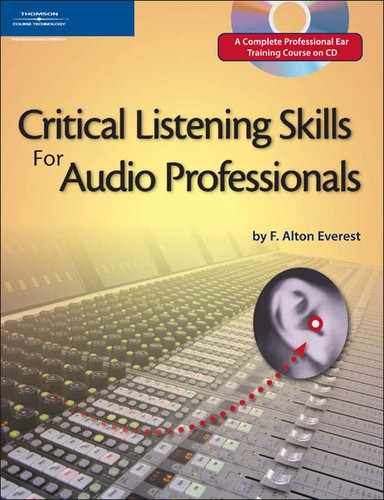Anatomy of the Ear
It is difficult to consider the human ear without resorting to superlatives. The more one understands the human hearing system, the more awed one becomes. The ear/brain system truly is remarkable, and our understanding of it is fragmentary at best. However, what is known provides a basis of understanding that is of great value to the practicing musician, audio engineer, or high-fidelity enthusiast.
A simplified cross section of the ear is shown in Fig. 1. The pinna, or external ear, is far more than a decoration, as we shall see later. The sound gathered by the pinna enters the auditory canal (auditory meatus) and actuates the eardrum (tympanic membrane). The pinna, auditory canal, and the eardrum diaphragm constitute the outer ear.
Figure 1. Illustration of the outer, middle, and inner ears in man

The middle ear’s only opening to the outside world is through the eustachian tube, which provides a rather tortuous path into the pharynx for the air flow necessary to equalize the static air pressure on the two sides of the eardrum. If this tube becomes clogged through infection, a cold, or a sudden change of altitude while riding in a light plane (commercial airplanes are pressurized), it can cause discomfort. The audio expert understands the eardrum as an “acoustic suspension” device working against the compliance of the air trapped in the middle ear. If both sides of the eardrum were exposed to the sound waves, its effect would be seriously diminished.
The three tiny bones of the middle ear, the malleus, incus, and stapes (or hammer, anvil, and stirrup in common terms), are a mechanical link between the eardrum and the oval window of the cochlea. We shall see later how this bony linkage provides a highly efficient transfer of sound energy from air to the liquid of the cochlea.
The cochlea is the inner ear. The cochlea is a mechanical-to-electrical transducer which translates vibratory energy to electrical impulses and sends them to the brain via the auditory nerve. The cochlea is coiled like a snail shell and is deeply embedded in the temporal bone. It is filled with fluid and contains membranes and hair cells that analyze the sound.
